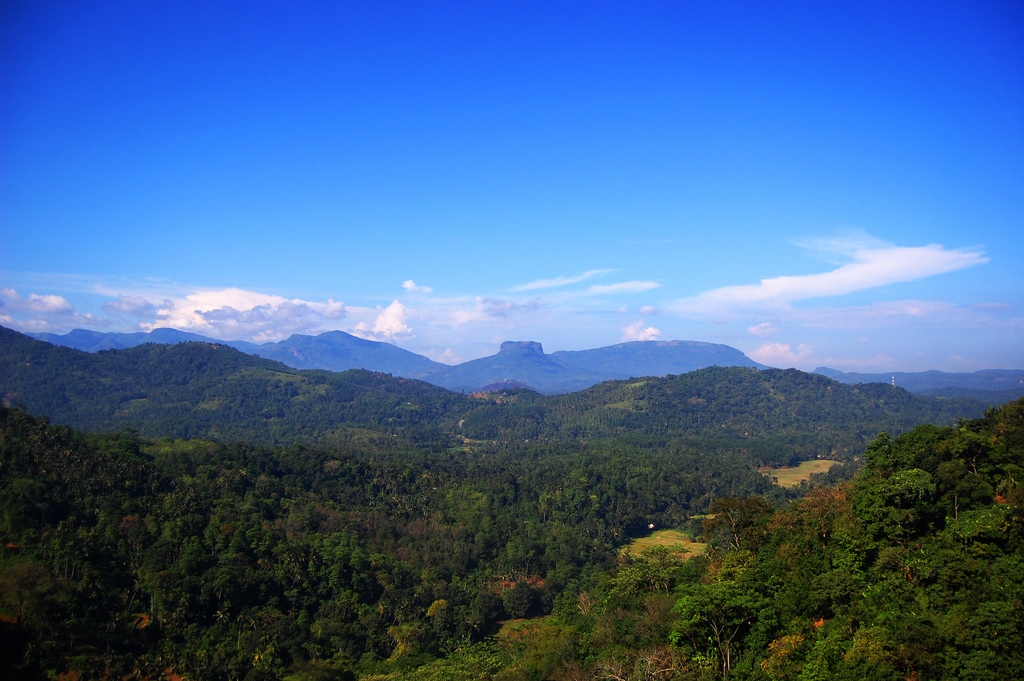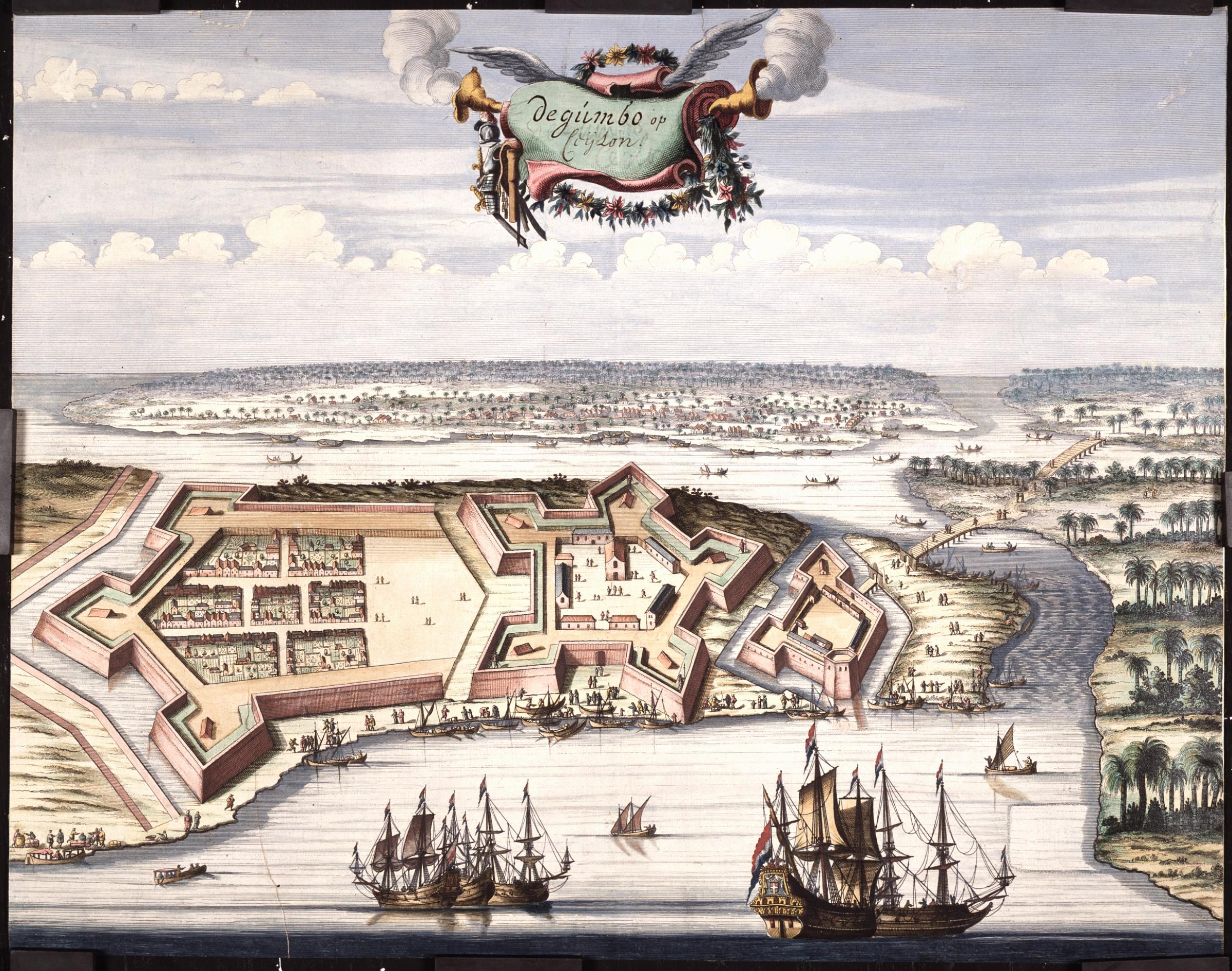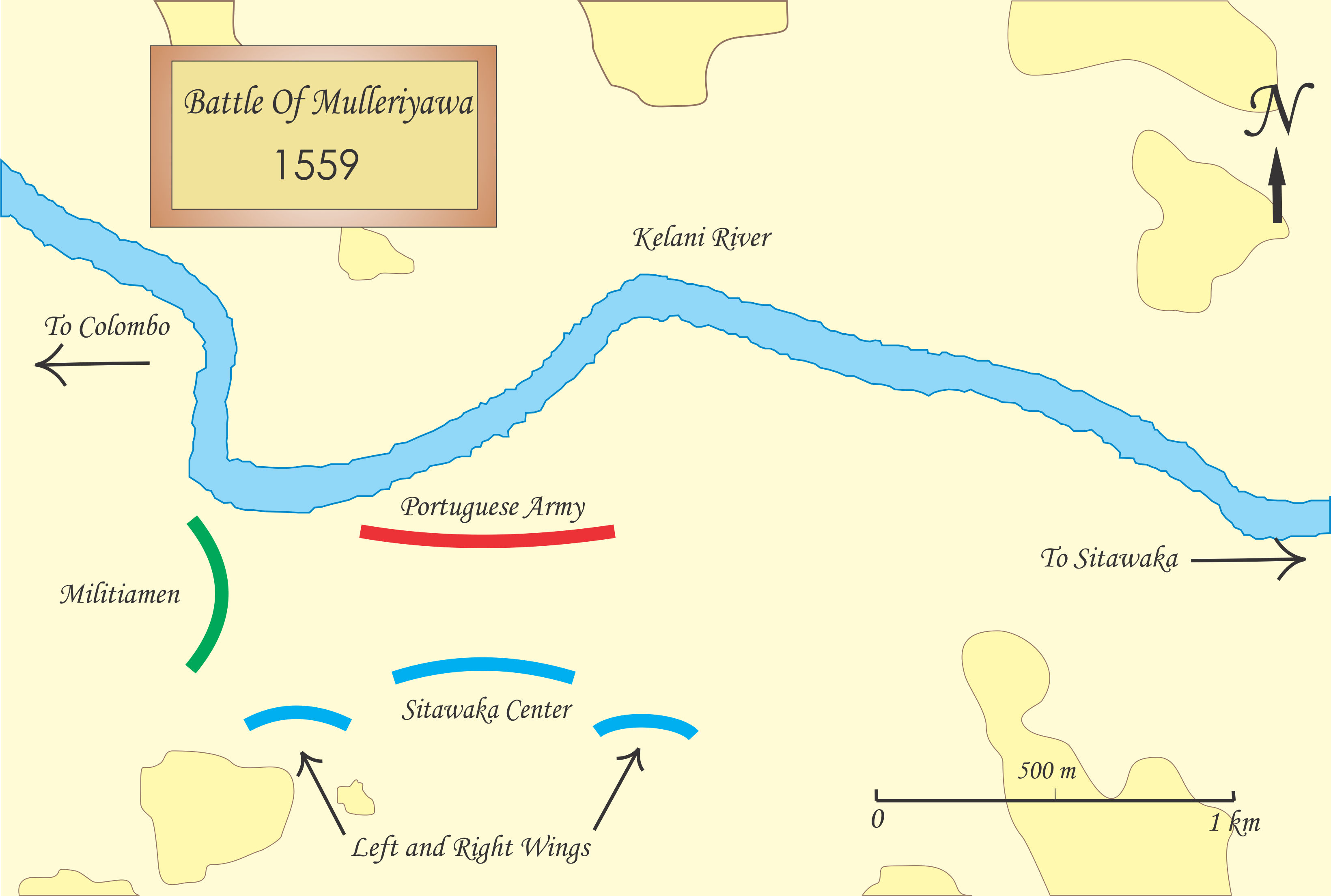|
Kuruvita Rala
Kuruvita Rala (also spelled ''Kuruwita Rala,'' also known as ''Antonio Barreto'' and ''Kuruvita Bandara'') was a Sri Lankan rebel leader and prince of Uva, who served as regent in the kingdom of Kandy. He was also a relation of Dona Catherina, Queen of Kandy and the guardian of her children. History First revolt, (1603) Antonio Barreto as he was known, was a Sinhalese Catholic Karava soldier from the kingdom of Kotte, who had initially fought on the side of the Portuguese Empire as a Lascarin commander. Barreto lead a rebellion against the Governor of Portuguese Ceylon, Jerónimo de Azevedo, in 1603 after his comrade Vimaladharmasuriya I seized power in the Kingdom of Kandy. Barreto forced the Portuguese forts in the Kuruwita region to capitulate. Antonio Barreto fought on the side of Kandy kingdom where he gained high office under Vimaladharmasuriya I under the name ''Kuruvita Rala'' and was rewarded with the title "Prince of Uva". Second revolt, (1616–1619) Vimalad ... [...More Info...] [...Related Items...] OR: [Wikipedia] [Google] [Baidu] |
Sri Lanka
Sri Lanka (, ; si, ශ්රී ලංකා, Śrī Laṅkā, translit-std=ISO (); ta, இலங்கை, Ilaṅkai, translit-std=ISO ()), formerly known as Ceylon and officially the Democratic Socialist Republic of Sri Lanka, is an island country in South Asia. It lies in the Indian Ocean, southwest of the Bay of Bengal, and southeast of the Arabian Sea; it is separated from the Indian subcontinent by the Gulf of Mannar and the Palk Strait. Sri Lanka shares a maritime border with India and Maldives. Sri Jayawardenepura Kotte is its legislative capital, and Colombo is its List of cities in Sri Lanka, largest city and financial centre. Sri Lanka has a population of around 22 million (2020) and is a multinational state, home to diverse cultures, languages, and ethnicities. The Sinhalese people, Sinhalese are the majority of the nation's population. The Tamils, who are a large minority group, have also played an influential role in the island's history. Other long establ ... [...More Info...] [...Related Items...] OR: [Wikipedia] [Google] [Baidu] |
Philippus Baldaeus
Philips Baelde or Father Philippus Baldaeus, (baptized on 24 October 1632, Delft – 1671, Geervliet) was a Dutch minister. He went to Jaffna during the Dutch period in Ceylon with an invading Dutch force. As the second European after Abraham Rogerius, in his illustrated ''Description of the East Indian Countries of Malabar, Coromandel, Ceylon, etc.'' he documented the life, language and culture of the Tamil people, living in the north of the island. It was initially published in Dutch and German, while the English translation was published by the Ceylon Government Railway (1960). He wrote much about the religious, civil and domestic conditions of the places he visited and introduced his account of the Hindu mythology. He translated the Lord's Prayer of the Tamil language, and although it had mistakes, it was remarkable as the first treatise, printed in Europe of any Indian language. Baldaeus went back to Holland and preached until he died while still a young man. Life Ph ... [...More Info...] [...Related Items...] OR: [Wikipedia] [Google] [Baidu] |
Matara, Sri Lanka
Matara ( si, මාතර, translit=Māthara, ta, மாத்தறை, translit=Māttaṟai) is a major city in Sri Lanka, on the southern coast of Southern Province. It is the second largest city in Southern Province. It is from Colombo. It is a major commercial hub, and it is the administrative capital and largest city of Matara District. Etymology Consist of two elements, the term Matara gives its meaning as ''the Great Ferry'', that may be the meaning "great seaport" or "great fortress". It is also thought as being derived from the mispronunciation of the word 'Matora' by the Portuguese who called it 'Mature' or ''Maturai'' in 1672. The native word 'Matora' might also derived from 'Maha Tera' meaning the place where the Great River was crossed. It was also called 'Maha Tota' (Malo Tota) or Maha- pattana, the great ferry.''Maha Ethara'' meaning "great ford". Today, the Nilwala River runs through Matara and it is said that there was a wide area where ferries used to c ... [...More Info...] [...Related Items...] OR: [Wikipedia] [Google] [Baidu] |
Dissava
The Mahâ Dissâvas was a Great Officer in the Amātya Mandalaya, or Sinhalese Council of State, in the Sinhalese Kingdoms of monarchical Sri Lanka. Like many of the existing high offices at the time it had combined legislative and judicial powers and functioned primarily equivalent to that of a Provincial governor. The office of Dissava was retained under the successive European colonial powers, namely the Portuguese Empire, the Dutch East India Company and the British Empire. A Dissava was the governor a province known as a ''Disavanies''. With his province, the Dissava held both executive and judicial authority. History Kandyan kingdom Persons were appointed to the title and office by the King during the Kingdom of Kandy, these appointees headed the administration of a large province of the kingdom known as a ''Disavanies'' and was the king's personal representative, tax collector in that area. There were twenty one provinces of which twelve of the larger outlying provin ... [...More Info...] [...Related Items...] OR: [Wikipedia] [Google] [Baidu] |
Constantino De Sá De Noronha
Constantino de Sá de Noronha was the 6th and 8th Governor of Portuguese Ceylon. De Noronha was first appointed in 1618 under Philip II of Portugal, he was Governor until 1622 and then in 1623 until 1630. He was killed during the Battle of Randeniwela in a last stand after refusing to abandon his troops. Several accounts, though varying in accuracy, describe the moment of his death in detail. The Journal of Robert Knox (1681); ''"The General, seeing that defeat, and himself like to be taken, called his black boy (slave) to give him water to drink, and snatching the knife that stuck by his boy’s side, stabbed himself with it"'' The Journal of João Ribeyro (1681);''"The General, having done his duty as a chieftain and a soldier, threw himself in the midst of the enemy and cut down all who were bold enough to remain near him, till pierced with balls and arrows he fell dead on a heap of enemies whom he had slain."''He was succeeded by Jorge de Albuquerque and Filipe Mascare ... [...More Info...] [...Related Items...] OR: [Wikipedia] [Google] [Baidu] |
Sitawaka Kingdom
The Kingdom of Sitawaka ( si, සීතාවක, ta, சீீீதாவாக்கை இராசதானி) was a kingdom located in south-central Sri Lanka. It emerged from the division of the Kingdom of Kotte following the Spoiling of Vijayabahu in 1521. Over the course of the next seventy years it came to dominate much of the island. Sitawaka also offered fierce resistance to the Portuguese, who had arrived on the island in 1505. Despite its military successes, Sitawaka remained unstable, having to contend with repeated uprisings in its restive Kandyan territories, as well as a wide-ranging and often devastating conflict with the Portuguese. Sitawaka disintegrated soon after the death of its last king Rajasimha I in 1593. History Foundation The Kingdom of Kotte had been the major power in western Sri Lanka since its foundation in the early 15th century; under Parakaramabahu VI, the polity has been the last to unite the entirety of the island of Sri Lanka under o ... [...More Info...] [...Related Items...] OR: [Wikipedia] [Google] [Baidu] |
Matara District
Matara ( si, මාතර දිස්ත්රික්කය ''Mātara distrikkaya''; ta, மாத்தறை மாவட்டம் ''Māttaṛai māvaṭṭam'') is a district in Southern Province, Sri Lanka. It is one of 25 districts of Sri Lanka, the second level administrative division of the country. The district is administered by a District Secretariat headed by a District Secretary (previously known as a Government Agent) appointed by the central government of Sri Lanka. Geography Matara District is located in the south west of Sri Lanka and has an area of . It is represented in the Sri Lankan Parliament following the 2010 Sri Lankan parliamentary election by former Sri Lankan national Cricketer Sanath Jayasuriya who stood for the United People's Freedom Alliance. Administrative units Matara District is divided into 16 Divisional Secretary's Division (DS Divisions), each headed by a Divisional Secretary (previously known as an Assistant Government Agent) ... [...More Info...] [...Related Items...] OR: [Wikipedia] [Google] [Baidu] |
Negombo
Negombo (, ) is a major city in Sri Lanka, situated on the west coast and at the mouth of the Negombo Lagoon, in Western Province, Sri Lanka, Western Province, from Colombo via Colombo - Katunayake Expressway. Negombo is one of the major commercial hubs in the country and the administrative centre of Negombo Division. Negombo has about 142,136 population within its Negombo Divisional Secretariat, divisional secretariat division. Negombo municipal boundary is fully extended throughout its Divisional Secretariat area. Negombo is known for its long sandy beaches and centuries old fishing industry. Negombo has a large bilingual (Sinhala/Tamil) population with a clear Catholic Church, Roman Catholic majority. = Etymology = The name "Negombo" is the Portuguese language, Portuguese corrupted name of its Tamil language, Tamil name ''Neerkolombu''. The Sinhala name means from Old-Tamil Naval terminology Meegaman Pattinam. Meegaman denotes Naval Captain, where the local Karava populati ... [...More Info...] [...Related Items...] OR: [Wikipedia] [Google] [Baidu] |
Wellawaya
Wellawaya ( si, වැල්ලවාය, translit=Vællavāya; ta, வெல்லவாய, translit=Vellavāyā) is a town located in Monaragala District, Uva Province of Sri Lanka. History On 25 August 1630 a major battle took place near Wellawaya between Portuguese forces and the Sinhalese under the command of King Rajasinghe II, which resulted in a complete rout of the Portuguese army. Wellawaya is where the first armed attack occurred, on 5 April 1971, by the communist Janatha Vimukthi Peramuna (JVP) against the Government of Ceylon, under Prime Minister Sirimavo Bandaranaike. See also *List of towns in Uva Uva Province is a province of Sri Lanka, containing the Badulla District and Moneragala District. The following is a list of settlements in the province. __NOTOC__ A Agalle, Agampodigama, Aggalaulpota, Akurukaduwa, Alakkangama, Alakolag ... References Populated places in Uva Province {{UvaLK-geo-stub ... [...More Info...] [...Related Items...] OR: [Wikipedia] [Google] [Baidu] |
Batticaloa
Batticaloa ( ta, மட்டக்களப்பு, ''Maṭṭakkaḷappu''; si, මඩකලපුව, ''Maḍakalapuwa'') is a major city in the Eastern Province, Sri Lanka, and its former capital. It is the administrative capital of the Batticaloa District. The city is the seat of the Eastern University of Sri Lanka and is a major commercial centre. It is on the east coast, south of Trincomalee, and is situated on an island. Pasikudah is a popular tourist destination situated northwest with beaches and flat year-round warm-water shallow-lagoons. Etymology Batticaloa is a Portuguese derivation. The original name of the region being the Tamil "Matakkalappu" (translation: ''Muddy Swamp''). According to Mattakallappu Manmiyam (மட்டக்களப்பு மான்மியம்) the word Mattakkallpu consists Tamil words "Mattu" (மட்டு) Matta-derived from "Mattam" (மட்டம்) means 'flat' and geographical name KaLappu. Mukkuwa name ... [...More Info...] [...Related Items...] OR: [Wikipedia] [Google] [Baidu] |
Rajasinha I Of Sitawaka
Rajasinghe I ( Sinhala:පළමුවන රාජසිංහ) was a king of Sitawaka, known for his patriotism and fight against the Portuguese invasion of Sri Lanka. Born as Tikiri Bandara to King Mayadunne, he received the name "Rajasinha" (meaning ''the Lion King'') after the fierce Battle of Mulleriyawa. Ascent to throne Generally, the recorded period of Rajasinha's reign starts from 1581 to 1592. However, as per Portuguese navigator De Queros, Mayadunne had turned the kingdom over to Rajasinha in 1578 before his death in 1581. There are various narratives surrounding Rajasinha's role in his father's death. As per Thibbotuwawe Buddharakhitha's Mahawamsa(Chapter 4) written during the reign of Kirti Sri Rajasinha of Kandy, Rajasinha killed him. Minor Rajawaliya wrote that his patricide was considered an irreversible anantharya karma by Buddhist monks, so conflicts arose between him and the monks. As a result, he followed an anti-Buddhist line. However, others believe ... [...More Info...] [...Related Items...] OR: [Wikipedia] [Google] [Baidu] |







